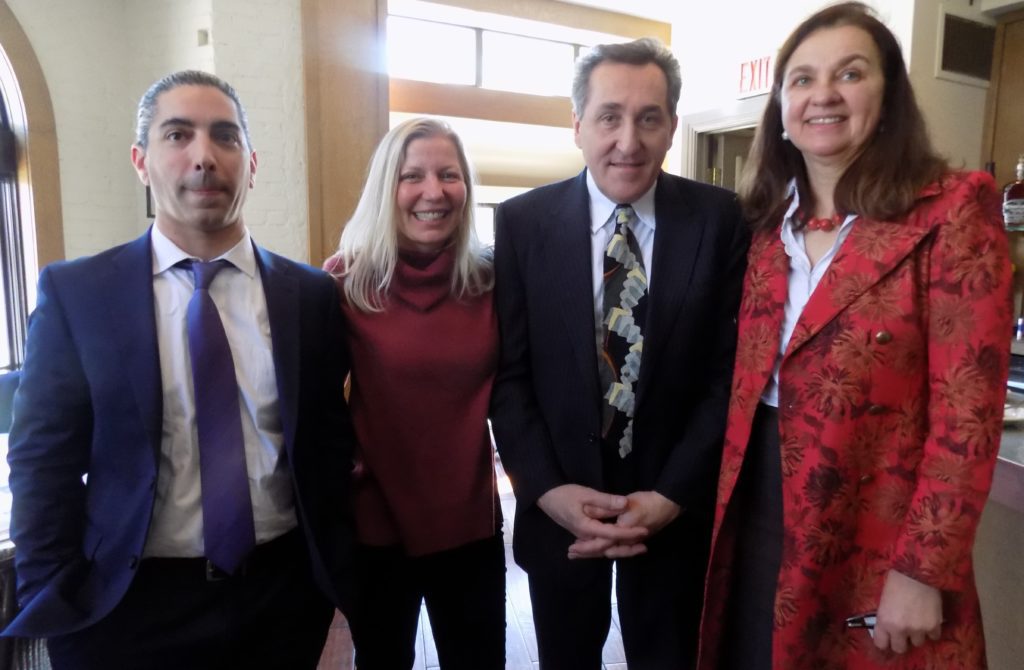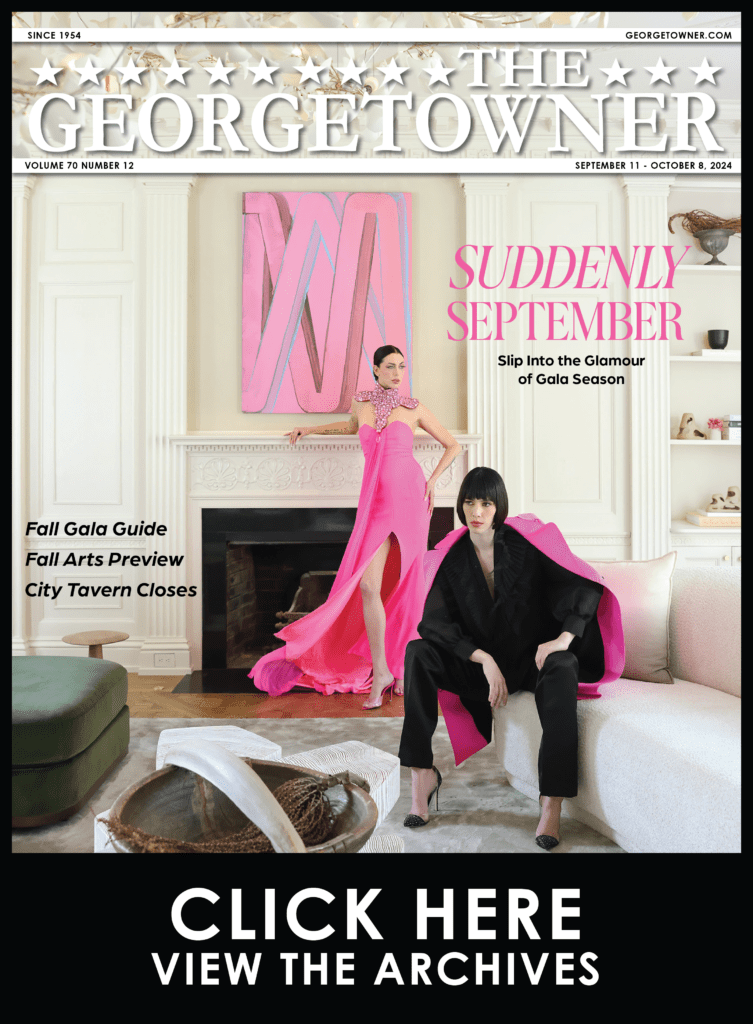Air and Space Curator Shares Revamp Plans
By • March 8, 2018 0 1352

Peter L. Jakab started out at the Smithsonian National Air and Space Museum as an intern in 1983. That was just seven years after the museum opened during the nation’s bicentennial, attracting a million visitors in the first month. Now chief curator, Jakab — who earned his Ph.D. in American history from Rutgers University — spoke about the Air and Space Museum’s planned renovation at Georgetown Media Group’s March 8 Cultural Leadership Breakfast at the George Town Club.
The staged renovation, allowing the museum to continue to welcome visitors, is expected to take seven years, starting this summer.
The estimated cost of the “revitalization” component, including the replacement of the façade and systems, is $650 million, requested from Congress. Only 1 1/4 inches thick, the museum’s original skin of Tennessee Pink marble (also used for the National Gallery) is “warping and failing.” The new stone facing will be Colonial Rose granite from Minnesota. “It’s pink enough,” he quoted an official as declaring.
The “transformation” component — a revamp of all 23 major galleries — is budgeted at $250 million, to be raised from private sources.
Funds have to be privately raised for every program and exhibit, noted Jakab. In response to a question about whether a nominal admission fee might be charged, he said that the Smithsonian “would be very reluctant to do that,” since it would limit the museums’ accessibility. He pointed out that fees are charged for some programs, such as Imax films.
Smithsonian Secretary David J. Skorton, who arrived in 2015, has set a goal of reaching a billion visitors across the globe, both in person and electronically, said Jakab. Along with reimagining Air and Space’s core stories, introducing new topics and making the whole more coherent, the curatorial and design team will aim for a seamless guest experience, integrating physical-world and digital encounters with content.
Examples of new content include: “Reinventing Flight,” an exhibit on the development of the airplane; “Destination Moon,” which will feature Neil Armstrong’s and Alan Shepard’s spacesuits, also looking at the future of lunar exploration; a new interpretation of the military history gallery; material on commercial spaceflight; and, in collaboration with the National Museum of American History, “A Nation of Speed: America’s Pursuit of Going Fast.”
Asked what single object he wishes he could acquire, Jakab said that the museum has many of the most important aviation artifacts, including “Smithsonian signature objects” like the 1903 Wright Flyer and the Spirit of St. Louis. The Smithsonian obtained the latter after curator Paul Garber urged the then-secretary to send a telegram to Paris for Charles Lindbergh to read upon completing the first solo nonstop trans-Atlantic flight in 1927.
“I inherited a wonderful toy box,” said Jakab. Though the circumstances were tragic — its owner, board member Javier Arango, died in a crash last year — he mentioned a Sopwith Camel now at the museum’s Steven F. Udvar-Hazy Center at Dulles Airport as a major recent acquisition. Both the Camel and another historic airplane from Arango’s collection were received as a bequest. More than 180 planes and about 150 spacecraft, including Space Shuttle Discovery, are on display at the Udvar-Hazy facility, which opened in 2003.
Responding to a question about programs for schoolchildren, Jakab cited the museum’s 30-minute monthly broadcast on science topics, “STEM in 30,” and a Teacher Innovator Institute that will launch this summer.
Jakab most recently curated “Artist Soldiers: Artistic Expression in the First World War,” another collaboration with the American History Museum, on view through November.

